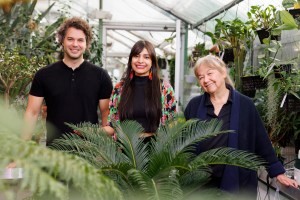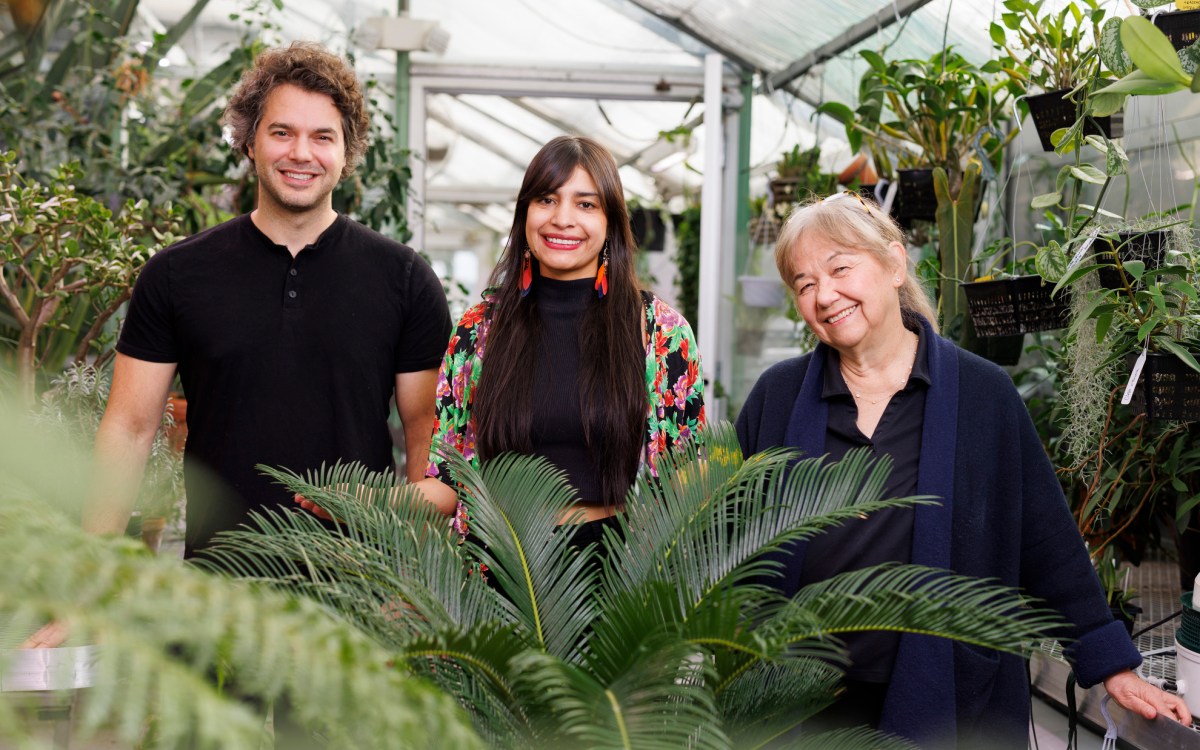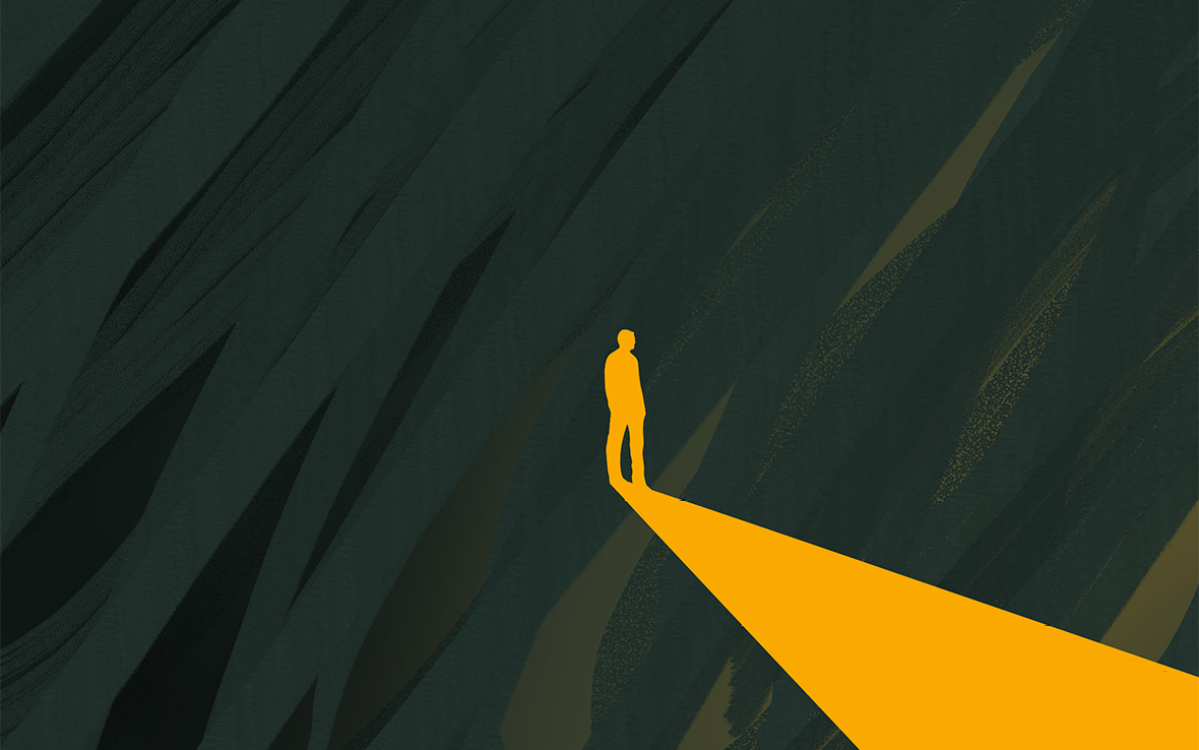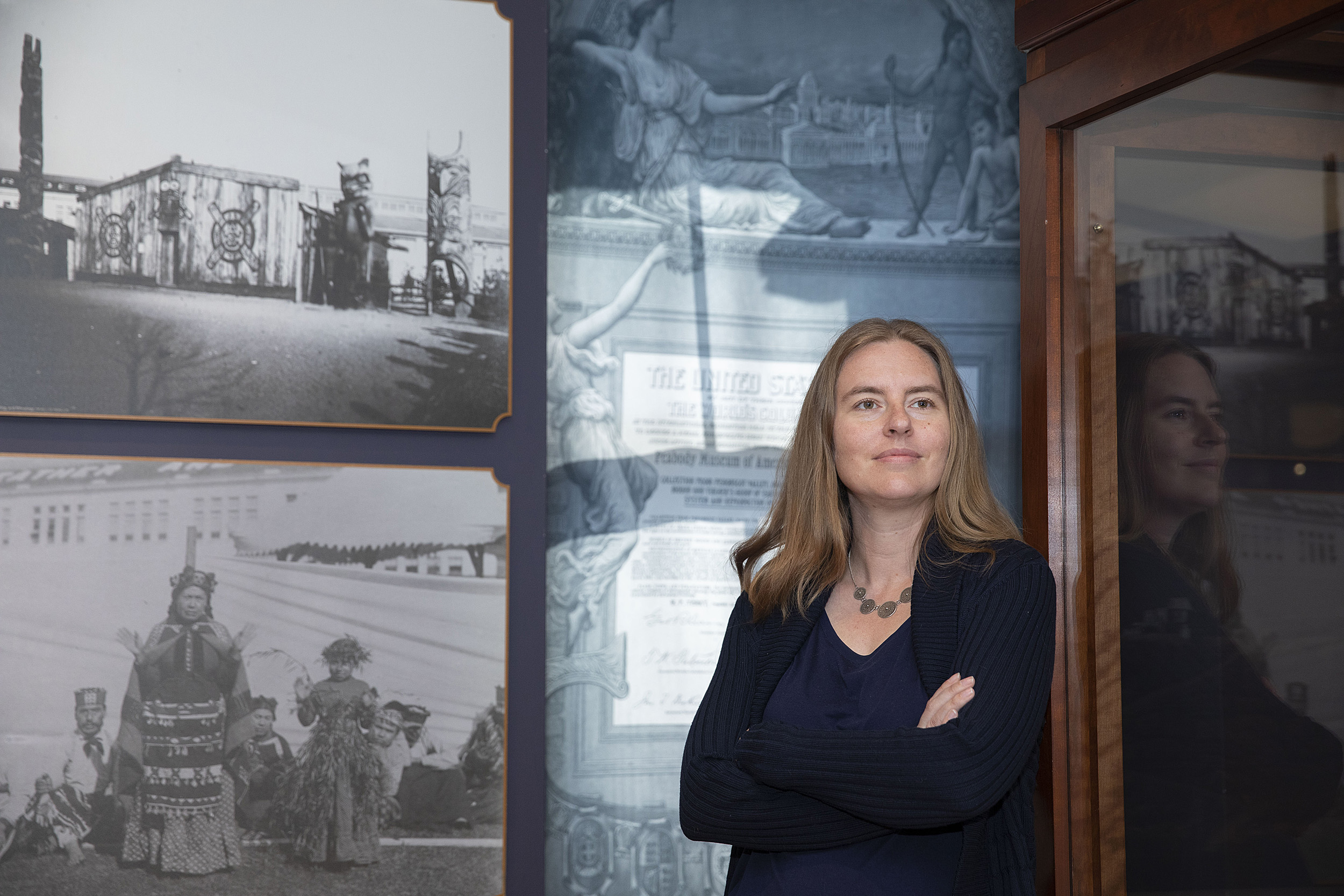
Christina Warinner, who was recently appointed assistant professor of anthropology, considers calcified plaque a DNA “time capsule.”
Kris Snibbe/Harvard Staff Photographer
The archaeology of plaque (yes, plaque)
Christina Warinner says studying ancient dental calculus offers insights into diets, disease, dairying, and women’s roles
Not many people can get excited about plaque, but Christina Warinner loves the stuff.
The recently appointed assistant professor of anthropology in FAS and Sally Starling Seaver Assistant Professor at the Radcliffe Institute, Warinner was among the first researchers to realize that calcified plaque, otherwise known as dental calculus, could shed new light on everything from ancient diet and disease to the spread of dairying and the roles of women in society.
“It’s like a time capsule,” she said. “It’s the single richest source of ancient DNA in the archaeological record. There are so many things we can learn from it — everything from pollution in the environment to people’s occupations to aspects of health. It’s all in there.”
And it was a discovery, Warinner said, that happened almost entirely by accident.
After receiving her Ph.D. from the Graduate School of Arts and Sciences in the Anthropology Department’s archaeology program, the Kansas native took a postdoc at the University of Zurich in what was then the new Center for Evolutionary Medicine. There she set out to investigate whether it would be possible to identify pathogens in the archaeological record to study the evolution of diseases. She chose dental caries, or cavities, as a case study, because they are visible amid skeletal remains and abundant in the archaeological record. She set out to examine whether the bacteria that caused caries in ancient teeth could be identified genetically.
“I started to notice all this dental calculus, which is very common on teeth, and was always getting in the way,” she said. “Most people would just take it off and throw it away, but I thought it could be interesting, so I turned that thought around and looked at it from a different angle.
“As a side project, I started applying genomic and proteomic techniques to it, which hadn’t been done before,” she continued. “It’s not perfect, and not everything preserves … but it turns out we can say an awful lot about the past through calculus.”
Applying genomic tools has allowed Warinner to get the clearest picture yet of not only ancient genomes, but ancient microbiomes as well.
“We have a project running now on the evolution of the oral microbiome where we are comparing looking at New World monkeys, gorillas, chimpanzees, Neanderthals, and a diverse range of humans,” she said. “We’re looking to see if there are shifts in oral microbial communities through time, and whether functional shifts might indicate changes in diet or other adaptations.”
“[Plaque is] like a time capsule. It’s the single richest source of ancient DNA in the archaeological record. There are so many things we can learn from it — everything from pollution in the environment to people’s occupations to aspects of health. It’s all in there.”
Christina Warinner
She also investigates paleofeces, and another project in her lab focuses on understanding recent evolution in the gut microbiome. “A number of studies have shown that the gut microbiome of traditional societies around the world is very differently structured than that of industrialized populations. We can tell that it is the industrialized gut microbiome that has changed, but the question is: Over what time scale? Is it 100 years? A thousand years? Ten thousand years? What caused it to shift? Was it agriculture? Was it industrialization?”
Answering those questions, Warinner said, is important from a public health perspective as well as a historical one.
“The thing that characterizes, more than anything else, the industrialized gut microbiome is a lack of diversity,” she said. “Microbial loss may lead to reduced resiliency and a higher susceptibility to disease. Conditions like Crohn’s disease, IBD [inflammatory bowel disease], and many gastrointestinal disorders share, as a common feature, reduced or altered microbial diversity, and it may be that there’s something about our current, industrialized diet that is driving this pattern.”
In addition to modern ailments, Warinner’s work has also shed light on one of the most mysterious puzzles in medical history — the cause of a 16th-century epidemic that decimated the indigenous populations of colonial Mexico and Central America, and that was known only as cocoliztli, the Aztec word for “pestilence.”
“Most people know that when the Spanish came to the Americas they introduced a number of diseases,” she said. “In the 16th century alone, there were 11 documented epidemics, including an outbreak of smallpox in 1520 that contributed to the fall of the Aztec Empire. However, the worst epidemic — the one considered to be the single greatest killer in terms of loss of life — occurred two decades later in 1545, and neither the Spanish nor the Aztecs knew what it was.”
Though researchers had debated the exact nature of the epidemic for more than four centuries, with hypotheses ranging from influenza to plague to hemorrhagic fever, there was scant evidence to support any one theory.
In 2006, Warinner, then a grad student, was part of a team of archaeologists who stumbled onto a mass burial site for cocoliztli victims, but it wasn’t until 2018 that she and colleagues at the Max Planck Institute finally were able to identify a rare strain of Salmonella enterica that they believe was responsible for the epidemic.
Warinner has also used the study of dental calculus to shed light on cultural practices, including the production of medieval books.
“Several years ago, we started a study on periodontal disease and as part of that study we analyzed the teeth of individuals buried at a small medieval monastery in Germany. Quite unexpectedly, we found that one woman’s dental calculus was full of blue crystals we later determined to be pigment from lapis lazuli,” she said. “At the time, that was one of the rarest and most expensive mineral pigments in Europe, and the only explanation that made sense was that she must have used the pigment, likely as an illustrator. Only a very skilled artist would have been entrusted with such a valuable substance, and here it was on the teeth of a woman buried at a rural women’s religious community. So this discovery revealed new information about trade routes and the more extensive use of this pigment during this early time period, as well as the involvement of women in art.”
Outside the lines
Christina Warinner is connecting her study of the past to tomorrow’s generation of archeologists — including her young daughter — with “Adventures in Archaeological Science,” a free downloadable coloring book that introduces the field to budding scientists. The 12-page project, with pages dedicated to the people, history, and tools of the field, was originally created in English and German, but has been translated into more than two dozen languages including Chinese, Arabic, Spanish, Swahili, Mongolian, Yucatec Mayan, and Nepali. Warinner, who is one of the editors, and her team bring the coloring books into their fields of study to help explain to local children what they are doing. “Human history belongs to all of us, and the research and discoveries we feature in the book have taken place all over the world. We thought: Wouldn’t it be great if we could share this information with children everywhere in their own native language so that they too could experience the joy and excitement of science and archaeology?” she said.
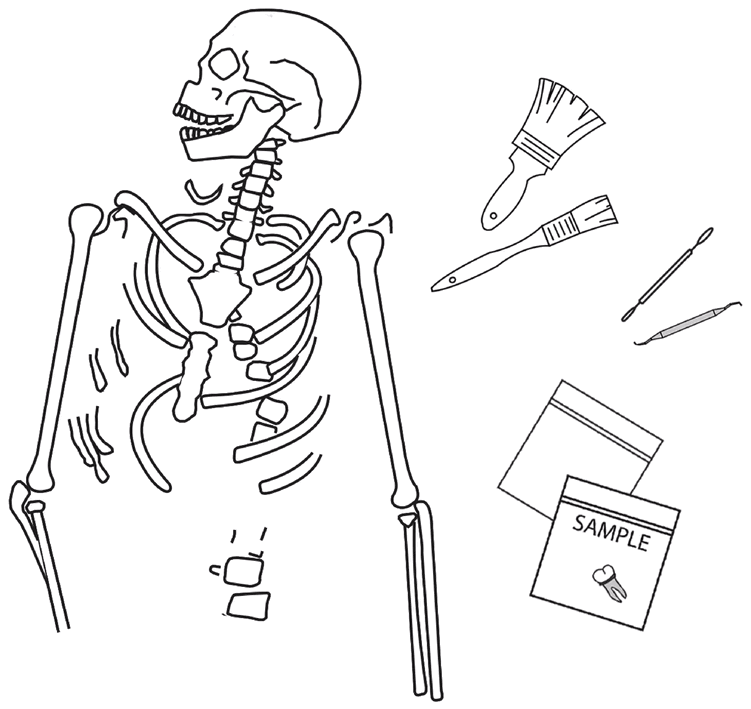
Warinner has also been using dental calculus to investigate the origins of dairying and how and when it spread across Europe and Asia.
“By looking at when and where animal milk proteins first appear in people’s dental calculus, we are able to reconstruct the prehistory of dairying across the world — where it started, how it moved, where it spread,” she said. “That was hard to do before. It’s a really crucial part of human history for more reasons than people realize.”
Warinner’s work on dairying, however, is about more than tracing the spread of a key cultural practice — it is also revealing new insights into lactose intolerance.
Virtually all mammals can digest the milk sugar lactose as infants, and they do this by producing the enzyme lactase. However, they stop producing this enzyme as they get older, which is part of the weaning process. This is also true for most humans. For some time, researchers have known that the ability to digest lactose into adulthood is the result of genetic mutations that arose independently in European, Middle Eastern, and East African populations, and each time in cultures long associated with dairying. Thus, “lactose intolerance” is not really a disease, but rather the ancestral condition of humans. The ability to produce lactase into adulthood, known as lactase persistence, is a relatively recent adaptation.
“We knew dairying began in the Neolithic,” Warinner said. “So we thought we would find lactase persistence in the first farmers. Once ancient DNA technology came along, people began testing Neolithic farmers by the hundreds, and none of them had it. We now know there’s a time gap of about 4,000 years between when people first started dairying and when the first lactase persistence adaptations appear, so for 4,000 years people who should be lactose intolerant were dairying.”
Warinner suspects that the right community of gut microbes may help protect people from lactose intolerance. She explains that the work raises a host of important questions about how changes in diet affect the microbiome, and how that may cause or protect against certain conditions that can’t be explained by genetics alone.
“This is a case where we thought we really understood how a disorder — lactose intolerance — worked, and now we’re realizing it is so much more complex and different than we thought,” she said. “But this also suggests that our bodies can adapt to changes in many different ways.”
Ultimately, Warinner said, her goal is to illuminate some of the largest questions in human history using some of the humblest of materials.
“We’re taking a whole new look at the past, and instead of only focusing on big, obvious artifacts, we’re looking at all the dust and debris — all the things people have ignored,” she said. “One of the ways I describe this work is that it is the archaeology of the invisible. And dental calculus, this stuff most people pay a lot of money to get rid of, it turns out it’s really valuable.”

